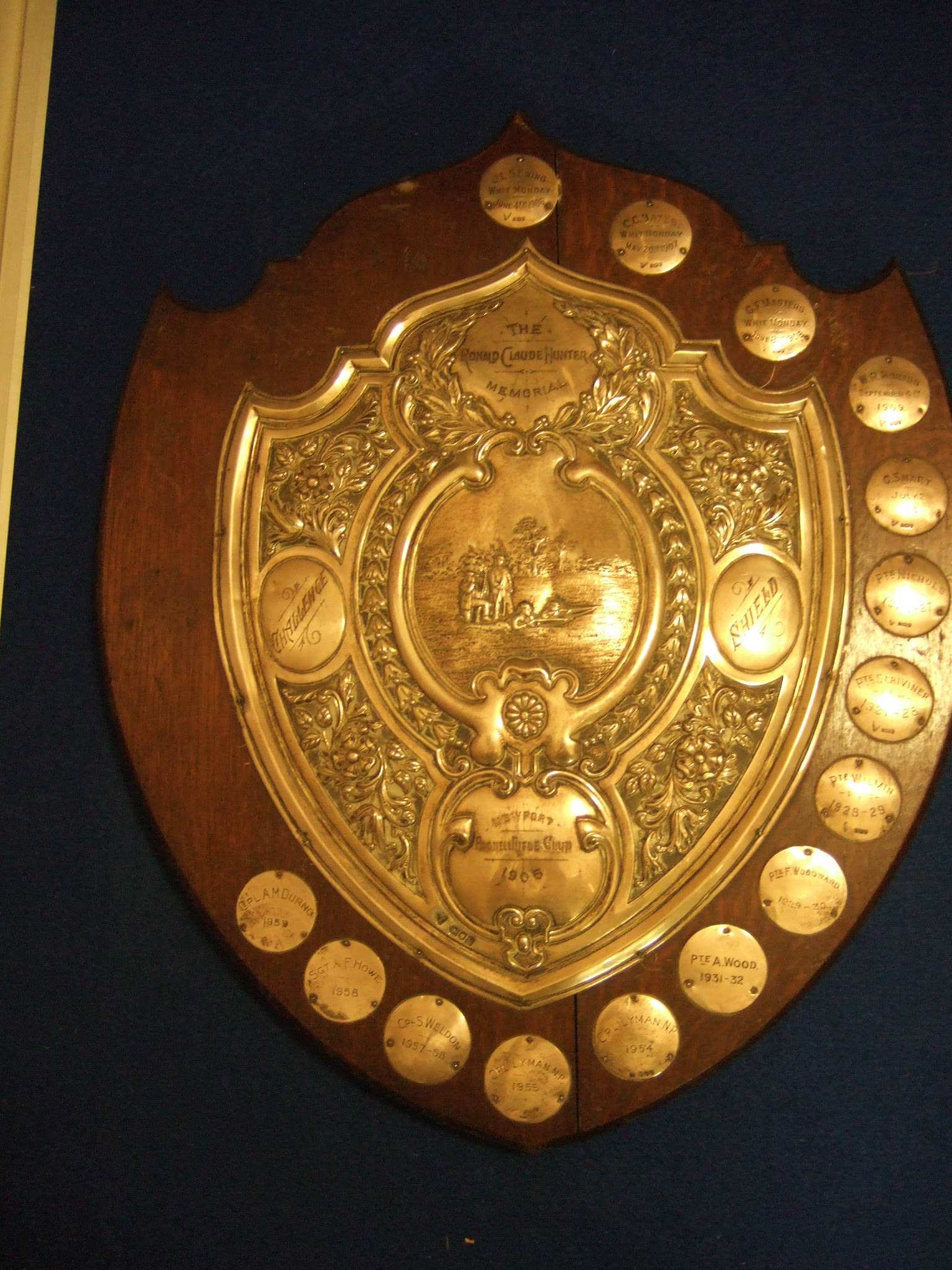The Hunter Memorial Challenge Shield was first presented for a rifle competition on Whit Monday 1906, it being won and awarded subsequently to J. L. S. Ewing at the Newport Pagnell Rifle Club’s annual meeting and prize giving at the town’s Masonic Hall in April 1907. Ronald Claude Hunter had been a noted prize shot, being listed as a prize winner in one of the competitions for the Bucks County Rifle Association in June 1904, when he was a private in the 1st Bucks Rifle Volunteers, and again in 1905. At the time of his death from pneumonia in December 1905, Ronald Hunter was the holder of the club’s Lathbury Challenge Cup and was registered as a pupil at William Trevor’s Lathbury Hall. Trevor had set up a tutoring business at the house in 1893, coaching young men for an army career by preparing them for entrance to Woolwich, Sandhurst, or the militia. Trevor served as adjutant to, and then commanding officer of, the 3rd North Bucks Battalion of the Volunteer Force in the Great War.
Ronald’s father, Sir Charles Hunter, presented the club with Ronald’s rifle and motor cycle. The club committee decided to reserve the rifle for use by any members who qualified for a rifle competition at Bisley but to sell the motor cycle and use the funds to purchase the silver memorial challenge shield. The competition was for marching and shooting, an eight-mile route to be completed in two hours, followed by firing 14 shots at 500 yards. The first winner, Ewing was also a pupil at Lathbury Park. Rifle clubs were encouraged by the Bucks Home Defence Committee following Lord Salisbury’s appeal to the Primrose League to do so in May 1900 during the South African War. Others in Bucks were raised at Amersham, Buckingham, Burnham, Datchet, Eton Wick, Iver, Great Missenden, The Lee, and Tingewick with further clubs linked to the rifle volunteer companies at High Wycombe and Marlow.
The medallions on the shield show that it was presented for the years 1906 to 1910 but then not again until 1926 to1932, and then from 1954 to 1959. By the 1920s, however, it was being awarded to serving Territorials and had been repurposed as part of the silver collection of the Royal Bucks Yeomanry.
